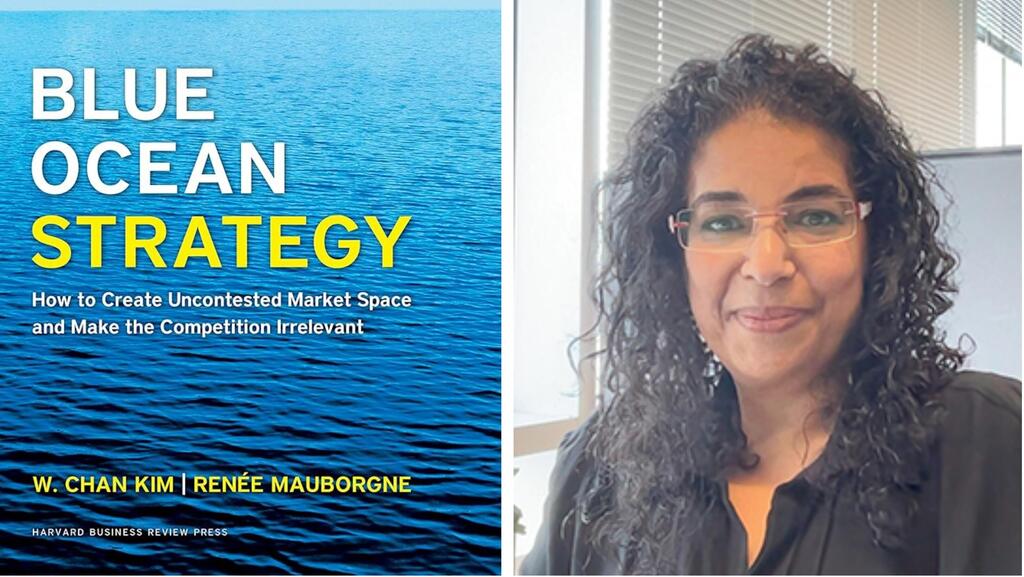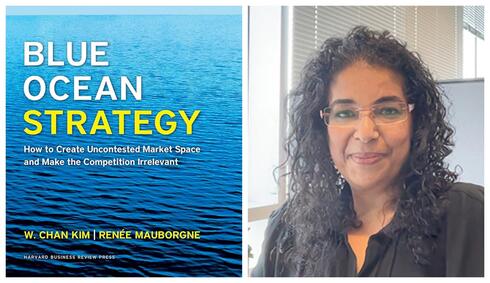
BiblioTech
CTech's Book Review: Tapping into ‘Blue Oceans’ and new opportunities
Sharona Meushar, VP of Global Communications and PR at Perion, shares insights after reading “Blue Ocean Strategy: How to Create Uncontested Market Space and Make the Competition Irrelevant” by W. Chan Kim and Renée Mauborgne.
Sharona Meushar is the VP of Global Communications and PR at Perion, which helps agencies, brands, and retailers get better results with their marketing investments. She has joined CTech to share a review of “Blue Ocean Strategy: How to Create Uncontested Market Space and Make the Competition Irrelevant” by W. Chan Kim and Renée Mauborgne.
Title: “Blue Ocean Strategy: How to Create Uncontested Market Space and Make the Competition Irrelevant”
Author: W. Chan Kim and Renée Mauborgne
Format: Book
Where: Home
Summary:
Blue Ocean Strategy is a guide to strategic escape. It urges businesses to stop chasing market share within existing boundaries and instead focus on creating entirely new demand in untapped markets, what the authors call “blue oceans.”
The central idea is value innovation: the simultaneous pursuit of differentiation and efficiency. Instead of choosing between standing out or keeping costs down, Blue Ocean Strategy shows how companies can break that trade-off, offering something uniquely valuable while streamlining operations to reach broader audiences. Instead of incremental improvements or reactive tactics, the strategy calls for a shift in mindset, away from rivals and toward reinvention.
Important Themes:
At the center of the book is a simple but powerful idea: stop benchmarking the competition and start charting your own course. Blue Ocean Strategy challenges the assumption that success comes from outperforming rivals. Instead, it argues that real breakthroughs happen when companies shift focus, from fighting over existing demand to creating new demand entirely.
Innovation, in this view, isn’t about adding more features or flashy upgrades. It’s about doing different - reimagining value in a way that sets you apart and opens up untapped market space.
A few standout examples bring this concept to life. Cirque du Soleil reimagined the circus by eliminating animal acts and typical circus snacks like popcorn, blending high-end theater and acrobatics to attract a new, more sophisticated audience.
Nintendo’s Wii skipped the graphics arms race and went after casual gamers, offering motion-controlled fun that invited families and friends to play together, many of whom had never picked up a console before.
To help companies replicate this kind of leap, the book introduces practical tools like the Strategy Canvas and the Four Actions Framework (eliminate, reduce, raise, create). Cirque followed this exact path: eliminating animals, reducing gimmicks, raising narrative and artistry, and creating a new genre of live performance.
The result wasn’t just a better circus. It was a category of its own. A blue ocean no one else was swimming in.
What I’ve Learned:
This book reminded me that sometimes, the boldest thing a brand can do is walk away from the noise, not with a louder message, but with a smarter direction. In a world obsessed with optimization and incremental gains, Blue Ocean Strategy is a prompt to step back and rethink the entire playing field.
It pushed me to see subtraction as a form of creativity. That removing features, traditions, or even target segments doesn’t necessarily mean a loss, it can be the starting point for reinvention. Often, we're so focused on what more we can offer that we overlook what we might intentionally strip away to reveal something simpler, sharper, and more compelling.
The book also shifted my perspective from the core audience to the non-customers, the people not yet convinced, and not yet engaged. These are often the biggest opportunities hiding in plain sight.
But perhaps the most lasting lesson is this: strategy isn’t just about competing better. It’s about deciding whether to compete at all or to move in a completely different direction. The real leap can be the moment you realize you’re free to choose a different arena entirely. And that’s where innovation begins.
Critiques:
Blue Ocean Strategy is inspiring, but not always grounded. Its vision is elegant, but for startups or teams deep in execution mode, it can feel like a luxury cruise in a sea of day-to-day fires.
Not every company can (or should) rewrite the rules. And in some industries, the waters are so charted it’s hard to know where the blue even begins.
Still, the book’s ambition is its strength. It stretches your strategic thinking in the best way, whether or not you have the sails (or resources) to go full voyage.
Who Should Read This Book:
If you're a founder who's tired of competing on price, a strategist seeking whitespace, or a marketer ready to break the mold, this book is for you.
You don’t need to be in a “blue ocean industry” to think like a blue ocean leader.
You just need the curiosity to challenge assumptions and the courage to redraw the map.
